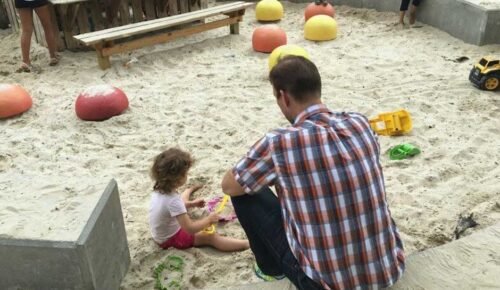Research on 2.5 million first-graders in France and the United States shows boys and girls start with equivalent math skills—yet within months of formal instruction, pedagogical choices carve out a confidence gap favoring boys. This divergence doesn’t stem from innate ability differences but rather from the educational experiences encountered during those initial months of formal education, which reshape children’s mathematical self-perception.
Mathematical confidence diverges from ability due to pedagogical choices, and this divergence compounds across academic paths, career trajectories, and lifelong quantitative engagement. The question becomes whether educators can reverse these patterns—or whether they’re locked into systems that deliberately create the problem they’re trying to solve.
Defining Mathematical Confidence
Mathematical confidence isn’t the same as computational ability. A student might correctly factor polynomials yet break into a cold sweat when facing a math test. Confidence—not just competency—decides whether people engage with mathematics or run from it.
What makes up mathematical confidence? It’s built from self-efficacy, anxiety control, a growth mindset about mathematical ability, and metacognitive awareness. These pieces interact in intricate ways. Students with a growth mindset see struggle as normal learning. Those who believe ability is fixed? They see that same struggle as proof they’re just not math people.
Building mathematical confidence means achieving success through genuine problem-solving rather than just producing correct answers. Hillary Knudsen, who has advised districts and led national improvement projects, emphasized this to the Texas State Board ad hoc committee on mathematics: “The goal should be problem solvers, not ‘answer getters.'” We’ve created a system that trains students to bark answers on command while avoiding the thinking that makes those answers meaningful. It’s like teaching someone to sing lyrics without understanding the song.
This distinction between process and outcome decides whether students develop genuine mathematical confidence or just performance anxiety.
The gap between confidence and competence shapes life trajectories. Confident students pursue advanced mathematics and analytical careers. Anxious students avoid these paths despite having the computational capacity. Confidence acts as a gateway—computational skills without psychological comfort create capability without engagement. Understanding what mathematical confidence requires naturally raises the question of when and how it develops. And what prevents it from forming in the first place.
Forming Confidence and Its Barriers
The gender gap research reveals that mathematical confidence forms rapidly—within the first months of formal instruction—suggesting that initial experiences disproportionately shape mathematical identity. Joni Funderburk, a longtime math educator and standards expert, told the ad hoc committee, “Math is an interconnected web of ideas rather than a narrow ladder of isolated procedures.” When students see mathematics as interconnected concepts they can explore, they develop confidence in their reasoning.
Traditional instruction often undermines confidence by emphasizing speed and public performance, creating anxiety. Presenting mathematics as rule-following prevents agency. Ability tracking signals fixed capability. Assessments emphasizing answer correctness over problem-solving processes create a performance rather than learning orientation.
Cultural messaging also affects confidence. Stereotypes about mathematical ability and the social acceptability of mathematical incompetence normalize avoidance. Try bragging about illiteracy at a dinner party the way people boast about mathematical incompetence. Procedural fluency plays a critical role in building confidence by enabling students to apply skills effortlessly to more layered problems. Kimberly Behrens, a learning scientist addressing the ad hoc committee, noted, “We know at Fit Learning that 50–60 math facts a minute—basically 1 a second—produces neurologic permanence and makes it easier for students to apply skills to more complex problems.” This principle clarifies that confidence requires both conceptual understanding and procedural fluency.
A negative feedback loop can occur: low confidence leads to mathematical avoidance, reducing practice and reinforcing low confidence. Conversely, initial success builds confidence, increasing engagement and competency. Educational systems create diverging trajectories through accumulated choices that either build or undermine psychological comfort alongside computational skill—but these patterns aren’t permanent.

Eliminating Comparative Pressure
Traditional classroom math creates a brutal comparison game where uniform pacing produces public winners and losers. When everyone moves at the same speed, visible gaps send harsh messages about mathematical ability that have nothing to do with actual capacity. Everything depends on processing speed instead.
We’ve somehow decided that thinking fast means thinking well. This turns classrooms into cognitive drag races where the quickest processor wins, understanding be damned. Students who need more time? They internalize a story about lacking mathematical talent. The anxiety sticks around even after they grasp concepts just as deeply as their faster peers.
The solution requires learning systems that let people progress individually. No time-based comparisons. No public performance metrics. Khan Academy’s mastery-based system builds confidence by removing timed pressure and public comparison. The platform’s mastery-based system ensures students demonstrate understanding before moving forward. This approach lets learners experience math as achievable challenges rather than an overwhelming pile of confusion.
Several features build confidence effectively. Individualized pacing removes comparative judgment entirely. Practice exercises provide immediate feedback and step-by-step hints for independent error correction. Students engage without public performance pressure.
This personalized mastery approach directly addresses how confidence requires experiencing success without comparative judgment.
It also prevents early trajectory splits that show up in gender gap research. When students progress without public comparison, confidence gaps from traditional timed settings become much less likely to form. This shapes course selection and career consideration down the line. Just as timed races erode self-trust, linguistic hurdles can trip up capable learners.
Removing Access Barriers
Traditional math instruction leans heavily on words. Students wade through word problems and verbal descriptions that demand strong linguistic processing. For English-language learners or kids whose mathematical thinking works more spatially than linguistically, this creates barriers that hide their real mathematical ability.
What looks like math weakness? It’s often linguistic overload in disguise.
Addressing this barrier means representing mathematical concepts through non-linguistic modes like visual or spatial reasoning. Remove the language barrier, and suddenly the ‘weak’ student becomes quite capable. Mind Research Institute applies this in ST Math’s visual, language-independent methods that build confidence alongside competency. The K–6 instructional software uses interactive animations to represent mathematical concepts through spatial-temporal reasoning rather than linguistic explanation. ST Math allows students to engage with mathematical relationships directly.
By eliminating language barriers, ST Math makes mathematics accessible regardless of English proficiency or reading level. This builds confidence for learners who may have struggled when mathematics was presented primarily through text. The program provides immediate visual feedback through animations showing mathematical consequences.
During the 2020–21 pandemic-driven remote learning, Mind Research Institute reached over one million students globally. When students engage with mathematical concepts through spatial reasoning without linguistic processing demands, apparent mathematical weakness often masks linguistic barriers rather than mathematical incapacity. Clearing language walls is vital—but watering down challenge brings its own confidence cliff.
Supporting Through Complexity
A common but misguided response to mathematical anxiety involves reducing challenge—simplifying content and lowering expectations. This paradoxically undermines confidence because students recognize when content has been watered down.
Building confidence through complexity requires structured preparation systems that maintain rigorous standards while providing comprehensive support and scaffolding. Students aren’t fooled by mathematical participation trophies. They know when work has been dumbed down. They lose respect for both the content and themselves.
Revision Village models rigorous, internationally-aligned curricula that build mathematical confidence by pairing high expectations with systematic examination preparation. The online revision platform for International Baccalaureate (IB) Diploma students offers comprehensive resources for IB Math. The platform covers both Analysis & Approaches and Applications & Interpretation.
The platform’s confidence-building features include thousands of syllabus-aligned exam-style questions filterable by topic and difficulty. Each question comes with written markschemes and step-by-step video solutions. Practice exams and timed mock examinations with walkthrough videos build confidence in examination performance specifically.
Revision Village reaches over 350,000 IB students across more than 1,500 schools worldwide.
Confidence through supported complexity proves that high expectations paired with systematic preparation develop both mathematical competency and psychological comfort with sophisticated reasoning. While rigorous structure prevents confidence erosion, many students reach these systems having already internalized mathematical failure—requiring different interventions altogether.
Rebuilding and Systemic Responses
Many adults reach adulthood with mathematical anxiety from earlier experiences. We’ve all got that math teacher story, don’t we? Adults avoiding mathematics often describe traumatic early experiences such as public humiliation or timed tests inducing panic.
Nahla Haidar, Associate Dean of the School of Science, Technology, Engineering, and Mathematics at Henry Ford College, led the development of gateway courses specifically designed for at-risk students after developmental courses were discontinued. These courses create supportive environments where students reconfront mathematics without shame or anxiety from earlier failure. The gateway model positions students as capable learners encountering new material rather than deficient performers repeating failed content. By explicitly acknowledging mathematical anxiety as legitimate and addressable, these courses help rebuild confidence alongside skill development.
The Illinois State Board of Education’s Comprehensive Numeracy Plan represents systemic recognition that mathematical confidence requires policy intervention beyond classroom improvements. Kirsten Parr, Director of Standards and Instruction at the Illinois State Board of Education, presented the plan aiming to change community perceptions of mathematical ability while shifting instructional emphasis from memorization toward problem-solving. The plan emphasizes evidence-based practices and early skill emphasis designed to prevent rather than remediate anxiety. It also advocates using physical materials with problem-solving approaches that move away from abstract symbolic manipulation toward concrete reasoning.
Policy-level intervention addresses coordinated change across teacher preparation, curriculum adoption, assessment design, and resource allocation affecting all students rather than depending on individual program access. And these systemic shifts matter because confidence spills far beyond classroom doors.
Life-Wide Implications
These interventions matter because mathematical confidence shapes far more than test scores or course selection. Confidence directly determines course selection patterns. The gender gap research demonstrates this mechanism—equivalent initial skills rapidly diverge in confidence, then different course selections reflect confidence rather than ability.
Confidence shapes career consideration beyond explicitly mathematical careers. Analytical roles across industries require quantitative comfort; individuals with strong self-efficacy consider these opportunities while those with anxiety eliminate them despite adequate computational skills.
Confidence affects personal financial decision-making—confident individuals engage with quantitative financial information while anxious individuals avoid such engagement even when computationally capable. Civic participation also requires engagement with quantitative policy arguments about healthcare costs, climate data, and economic forecasts. Politicians exploit this mathematical discomfort beautifully—throw around enough numbers, and half the audience checks out mentally. Civic innumeracy often reflects psychological discomfort rather than computational inability, affecting democratic participation.
Across academic, professional, financial, and civic contexts, mathematical confidence provides advantages distinct from ability. Confident individuals engage with quantitative challenges and seek quantitative information.
The Imperative of Mathematical Confidence Architecture
Research reveals mathematical confidence gaps don’t stem from natural ability differences. They’re created by how we teach.
You can build mathematical confidence deliberately by tackling specific barriers. Remove comparative pressure through personalized, mastery-based progression. Strip away linguistic barriers with visual approaches that don’t rely on language. Pair high expectations with comprehensive support through rigorous, structured curricula.
Here’s what’s striking: this transformation happens within months. That’s barely enough time to get it right, but it’s also barely enough time to mess it up completely.
Confidence affects everything. Academic paths, career choices, financial decisions, civic engagement. Educators have a choice: keep using systems that deliberately crush confidence, or rebuild around developing it.
The window’s narrow, but it’s wide open—let’s redesign math education before that gap becomes a canyon.




























